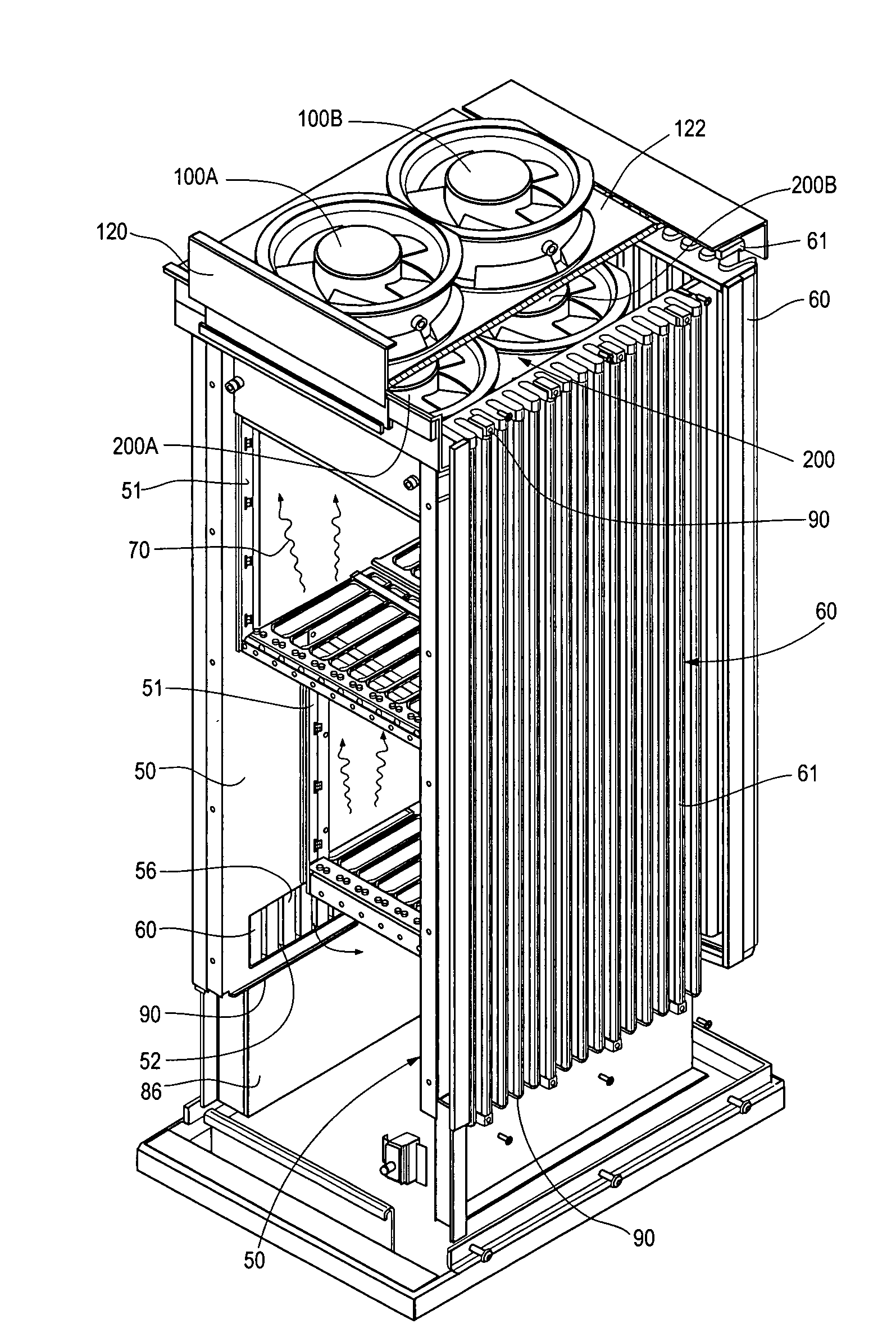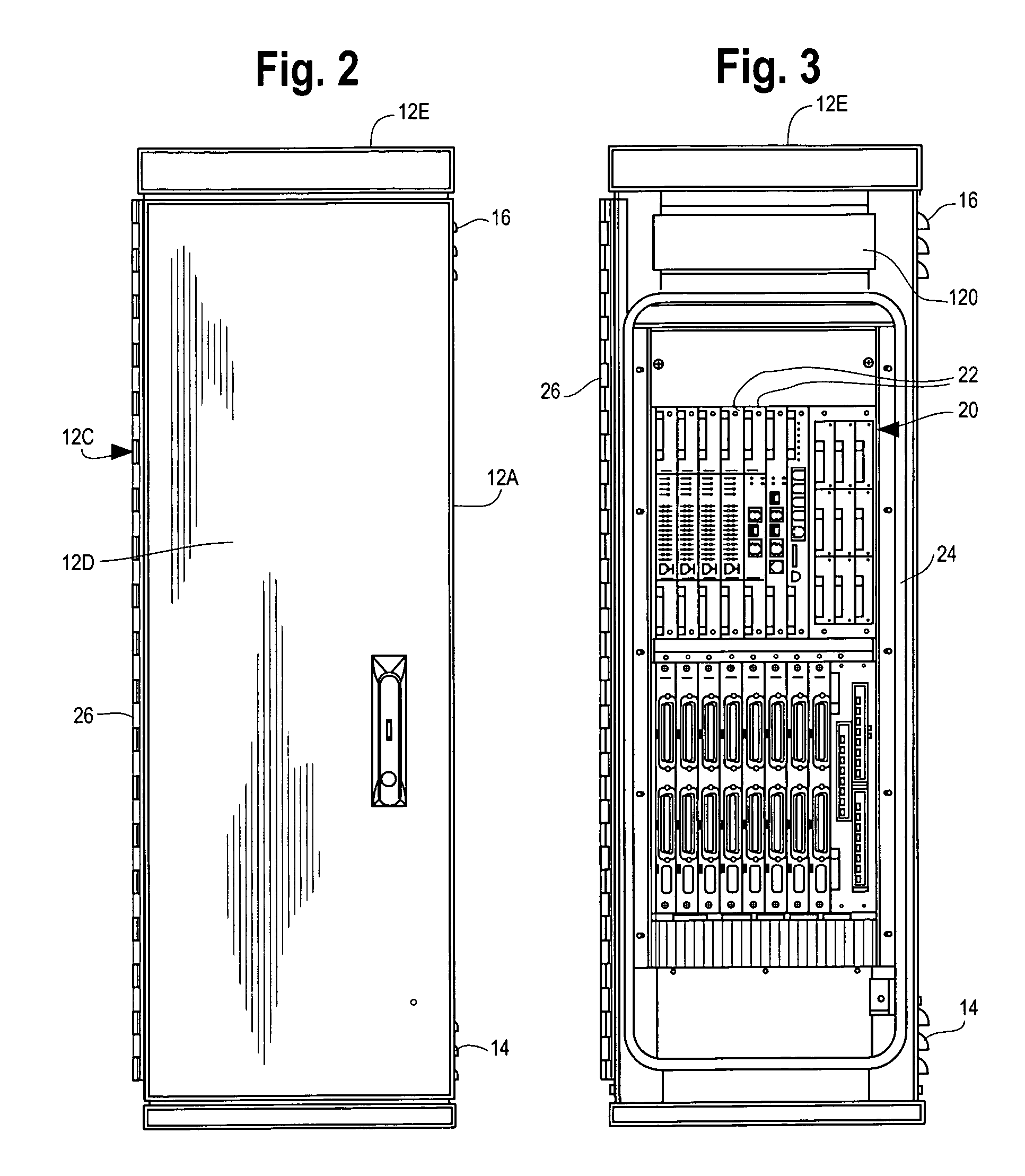Electronics cabinet with internal air-to-air heat exchanger
a technology of air-to-air heat exchanger and electronic cabinet, which is applied in the direction of electrical apparatus casing/cabinet/drawer, cooling/ventilation/heating modification, instruments, etc., can solve the problems of separate air-to-air heat exchanger, component overheating and failure, and significant heat generation during operation
- Summary
- Abstract
- Description
- Claims
- Application Information
AI Technical Summary
Benefits of technology
Problems solved by technology
Method used
Image
Examples
Embodiment Construction
[0024]Referring now generally to FIGS. 1–4, FIG. 1 is a perspective view of a cabinet 10 enclosing electronic components (see FIG. 3), showing the outer panels 12 or “skin” forming the periphery of the cabinet 10. The panels 12 include the three side panels 12A, 12B and 12C, a front door 12D which is facing away from the viewer in FIG. 1, and a top panel 12E. The side panels 12A–C include lower air intake vents 14 where relatively cooler air is introduced into the cabinet, and more particularly to narrow air gap or space that exists between the skins 12A–C and the outer surface of a plurality of air-to-air heat exchanger wall elements described below. The heat exchanger walls block ambient air from entering the interior of the cabinet where the electronic components are housed. The side walls also include upper exhaust vents 16 where relatively warmer air is removed from the cabinet.
[0025]The arrows 18 in FIG. 1 show the air flow path for ambient air. The air flow path 18 is achieve...
PUM
 Login to View More
Login to View More Abstract
Description
Claims
Application Information
 Login to View More
Login to View More - R&D
- Intellectual Property
- Life Sciences
- Materials
- Tech Scout
- Unparalleled Data Quality
- Higher Quality Content
- 60% Fewer Hallucinations
Browse by: Latest US Patents, China's latest patents, Technical Efficacy Thesaurus, Application Domain, Technology Topic, Popular Technical Reports.
© 2025 PatSnap. All rights reserved.Legal|Privacy policy|Modern Slavery Act Transparency Statement|Sitemap|About US| Contact US: help@patsnap.com



